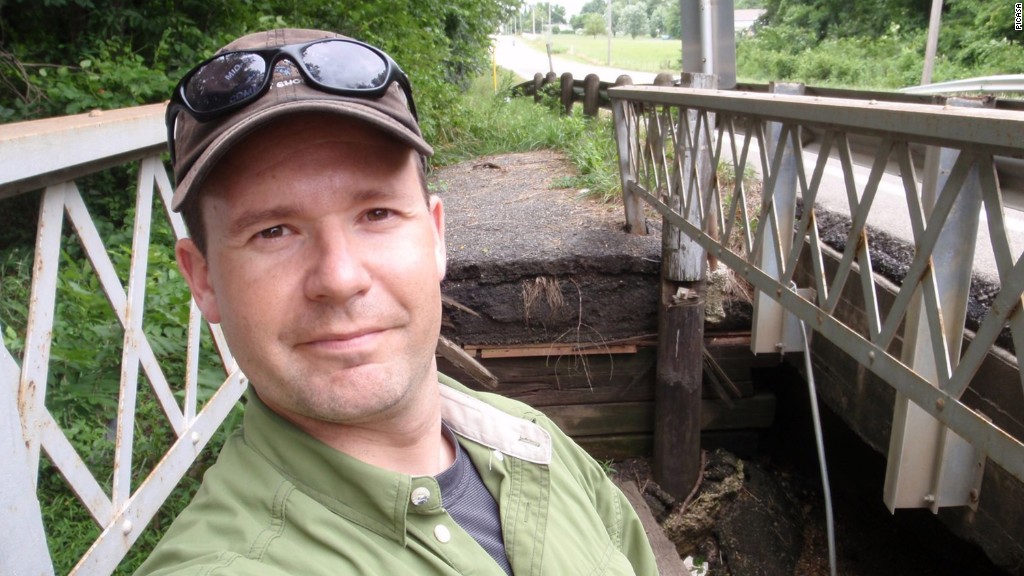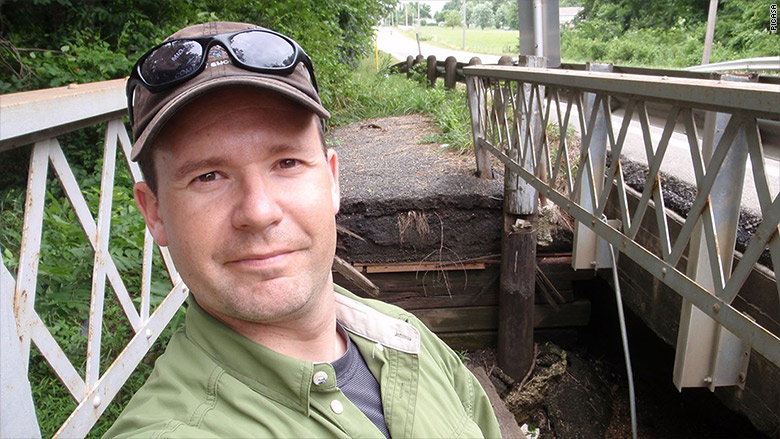
The Tesla driver killed in a crash while in autopilot mode happened to be a huge proponent of autonomous driving.
Joshua Brown of Canton Ohio was driving with autopilot on a Florida road in May. As a tractor-trailer turned in front of Brown, his Tesla plowed ahead -- its roof striking the underside of the trailer and passing underneath it. The Tesla (TSLA) continued to drive, striking two separate fences and a utility pole before finally stopping. A portable DVD player was found in the vehicle, and the Florida Highway Patrol is investigating whether it was on during the crash, according to a spokeswoman.
On Thursday, U.S. regulators said they're investigating Tesla's autopilot system.
The autonomous mode is meant to handle some, but not all, driving situations. The software isn't perfect, and Tesla advises human drivers to keep their hands on the wheel at all times, and to stay alert.
Related: Tesla's autopilot probed by government after crash kills driver
Brown has posted 24 YouTube videos demonstrating the power of the technology since it was released in November of 2015.
"It'll say hold the wheel if it's unsure of its situation and it wants you to be prepared," Brown said in one video posted the day after Tesla launched autopilot. "If you don't take control, the car starts to brake and stuff. I've already done some testing with that, and yes it definitely starts to abruptly slow down."
In another video Brown posted -- entitled "Autopilot Saves Model S" -- he detailed how the software had helped him avoid a crash.
"Tessy did great," Brown said. "I have always been impressed with the car."

Autonomous driving experts caution that the nature of Tesla's system made it prone to a crash such the one that killed Brown.
"If we know cars moving at high speeds on highways have potential deadly blind spots under autopilot, then the onus on engineers is to either fix the software or turn it off," said Missy Cummings, a Duke engineering professor who has testified in front of Congress about autonomous vehicles. "We should not accept situations where manufacturers know about technology problems, warn drivers about the limitations in an owner's manual, and then shift the blame to the driver when a predictable accident happens."
In a blog post Thursday, Tesla said that the system is in public beta, meaning that it isn't a finished product.
Related: Driverless cars create a safety 'dilemma': passengers vs. pedestrians
Mobileye (MBLY), the Israeli company that makes some of Tesla's autopilot technology, said in a statement that the crash involved a vehicle turning in front of the Tesla. It said current automatic emergency braking system isn't designed to act in such situations. Mobileye said its systems will include lateral turn detection in 2018.
Interest has grown in autonomous driving as companies, governments and transportation experts point to its potential to reduce the number of accidents. About 1.25 million people die every year on the world's roads.
But there is a lot of debate about how to safely deploy the technology, and at what pace.
Tesla argues that autopilot is improving safety already. In a blog post, Tesla called this the first known fatality in the 130 million miles that its autopilot has been used. By comparison, there's a fatality every 94 million miles in the United States.
But don't read too much into those numbers, says Alain Kornhauser, director of Princeton's transportation program.
"We have no idea if Teslas have driven easy or hard miles, or how their distribution of miles driven looks relative to the nation as a whole," he said. "Intersections are tough. Those that involve trucks are even tougher. Those that involve trucks making left turns in front of you are even tougher etc."

